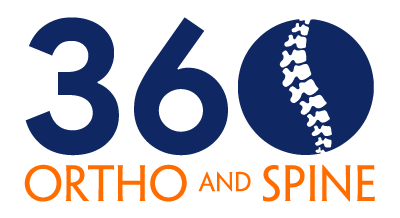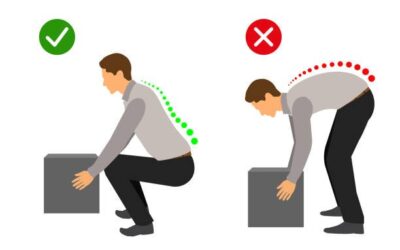
Location
11809 N Dale Mabry Hwy, Tampa, FL 33618
Office Hours
Mon – Fri 9:00 – 5:00 EST
Sat & Sun – Closed
Contact Us Today.
833 367 4968
Blog
The Importance of Core Strength for Alleviating Back Pain
Back pain is one of the most common physical ailments, often resulting from a sedentary lifestyle, poor posture, or muscular imbalances. Strengthening the core muscles has emerged as a key strategy for reducing back pain and improving overall spinal health. The core...
How to Avoid Re-Injury Following Spine Surgery
Spine surgery is a significant medical procedure that can provide relief from chronic pain, improve mobility, and restore quality of life. However, the road to full recovery requires careful attention to rehabilitation and lifestyle changes to prevent re-injury. Below...
Foods To Avoid That Cause Inflammation And Pain
Chronic inflammation is often linked to various health problems, including pain, joint issues, and even cardiovascular diseases. Certain foods have been shown to promote inflammation, exacerbating these conditions. Here are some of the most common foods to avoid if...
4 Benefits of Minimally Invasive Endoscopic Lumbar Surgery
Minimally invasive endoscopic lumbar surgery (MIELS) is a cutting-edge approach to spine surgery that offers several advantages over traditional open surgery. Below, we explore four key benefits of this innovative technique:
1. Reduced Recovery Time
One of the most significant benefits of MIELS is the considerably shorter recovery time. Traditional open spine surgery often requires an extended period of healing, sometimes taking weeks or even months. In contrast, MIELS typically involves smaller incisions and less disruption to surrounding tissues, allowing patients to return to their daily activities much faster. This quicker recovery period means less time away from work, hobbies, and family life.
2. Minimized Scarring and Pain
Since MIELS uses small incisions, typically less than an inch long, the resulting scars are minimal. For many patients, this is not only a cosmetic benefit but also reduces the risk of infection and other complications associated with larger wounds. Moreover, the minimally invasive nature of the procedure leads to less postoperative pain, which can often be managed with over-the-counter pain medications rather than stronger prescription drugs.
3. Lower Risk of Complications
The precision of endoscopic tools allows surgeons to target specific areas of the spine with minimal impact on surrounding tissues, which reduces the risk of complications. Traditional open surgery, on the other hand, involves larger incisions and more extensive tissue disruption, leading to higher chances of bleeding, infection, and other complications. MIELS is designed to minimize these risks, offering a safer option for patients.
4. Enhanced Surgical Precision
Endoscopic technology provides surgeons with a high-definition, magnified view of the spinal structures, enhancing their ability to perform delicate procedures with greater accuracy. This precision not only improves the effectiveness of the surgery but also reduces the likelihood of damaging nearby nerves or tissues. The result is a more successful surgical outcome, with fewer side effects and a quicker return to normal life.
Minimally invasive endoscopic lumbar surgery represents a significant advancement in spinal care, offering patients a safer, more effective option with numerous benefits. Whether you’re considering surgery for chronic back pain or another spinal issue, MIELS could be the ideal solution for a faster, less painful recovery.
4 Reasons Endoscopic Cervical Laminotomy Delivers Superior Results
When it comes to treating cervical disc herniations, endoscopic cervical discectomy has gained popularity for its promising outcomes. This minimally invasive procedure is proving to be a game-changer in spinal surgery. Here are four reasons why endoscopic cervical...
The Benefits of Laser Facet Nerve Ablation: A Modern Solution for Back Pain
Facet injuries can commonly affect accident and injury patients worldwide. For many, conservative treatments like medication and physical therapy are not enough to provide lasting relief. In such cases, advanced medical procedures offer new hope. One such procedure is laser facet nerve ablation, a minimally invasive technique that has been gaining popularity for its effectiveness and benefits.
What is Laser Facet Nerve Ablation?
Laser facet nerve ablation is a minimally invasive procedure designed to alleviate chronic back pain caused by facet joint injury or degeneration. It involves using a laser to target and destroy the nerve tissue that is transmitting pain signals from the facet joints to the brain. By disrupting these pain signals, the procedure can provide significant and lasting relief. Unlike Radio Frequency Ablation (RFA) the nerve destruction does not require repeat treatments every 8-12 months.
Benefits of Laser Facet Nerve Ablation
Minimally Invasive: Unlike traditional surgical approaches, laser facet nerve ablation requires no incisions at all. This results in less trauma, and minimal to no scarring.
Reduced Recovery Time: Patients undergoing laser facet nerve ablation often experience a quicker recovery compared to traditional surgeries. Many individuals can return to their normal activities the next day, making it an appealing option for those with busy lifestyles.
Effective Pain Relief: The procedure targets the specific nerves responsible for pain, offering effective relief for many patients, who suffer from facet joint injuries. Studies have shown that a significant number of patients experience substantial pain reduction and improved function after the procedure.
Precision: Laser technology allows for precise targeting of the nerve tissue, minimizing damage to surrounding structures and enhancing the overall safety of the procedure. Unlike Radio Frequency Ablation (RFA), which has to be repeated every year, laser ablation rarely requires a revision procedure. One and done.
Outpatient Procedure: Laser facet nerve ablation is typically performed on an outpatient basis, meaning patients can go home the same day as the procedure. This adds to the convenience and efficiency of the treatment.
Low Risk of Complications: As a minimally invasive procedure, laser facet nerve ablation has a lower risk of complications compared to more invasive surgical options. This makes it a safer choice for many patients.
Improved Quality of Life: By eliminating pain and improving function, laser facet nerve ablation can significantly enhance a patient’s quality of life. Many individuals report better mobility, improved sleep, and an overall greater sense of well-being following the procedure.
Who is a Good Candidate?
Laser facet nerve ablation is typically recommended for individuals who have not found relief from conservative treatments and are experiencing pain due to facet joint problems. A thorough evaluation by a spine specialist is necessary to determine if this procedure is appropriate for a particular patient. Frequently, diagnostic injections will be performed to confirm the pain source.
Conclusion
Laser facet nerve ablation represents a significant advancement in the management of facet injuries. Its minimally invasive nature, combined with its effectiveness in targeting pain at the source, makes it a valuable option for those seeking relief. If you suffer from facet pain and are considering your treatment options, consult with a spine specialist to see if laser facet nerve ablation could be the right choice for you.
The Advantages of Minimally Invasive Spine Surgery
When it comes to addressing spinal issues, the advent of minimally invasive spine surgery has revolutionized the field of orthopedic medicine. This advanced surgical approach offers numerous benefits that significantly improve the patient's experience and outcomes. In...
Tips To Maintain A Healthy Spine
Maintaining a healthy spine is crucial for overall well-being and mobility. Here are four key strategies to help you keep your spine in good condition: Maintain Good Posture: Proper posture is essential for spine health. When sitting or standing, align your ears,...
Anterior Cervical Discectomy and Fusion vs. Posterior Cervical Laminotomy and Foraminotomy: Choosing the Right Procedure for Neck Pain Relief
Neck pain and cervical spine issues can be debilitating, affecting one's quality of life. Two common surgical approaches to alleviate such problems are Anterior Cervical Discectomy and Fusion (ACDF) and Posterior Cervical Laminotomy and Foraminotomy (PCLF). While both...
Posterior Cervical Laminotomy: A Superior Alternative to Anterior Cervical Discectomy and Fusion
When it comes to treating cervical spine conditions, patients and healthcare providers have often turned to anterior cervical discectomy and fusion (ACDF) as the go-to surgical solution. However, an increasingly popular and effective alternative known as posterior...
Why Choose Us
WE ARE EXPERIENCED
Collectively, our team boasts over 3 decades of experience in the delivery of medical care. Moreover, our surgeons have performed well over 10,000 minimally invasive surgical procedures.
WE ARE AVAILABLE
WE ARE COMMITTED
CONTACT US TODAY
Find relief now
Quick links
Locations
Contact
360 Ortho & Spine
Tampa
Florida
P: 833 367 4968
E: info@360orthoandspine.com










